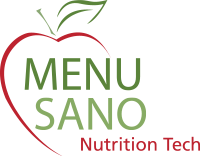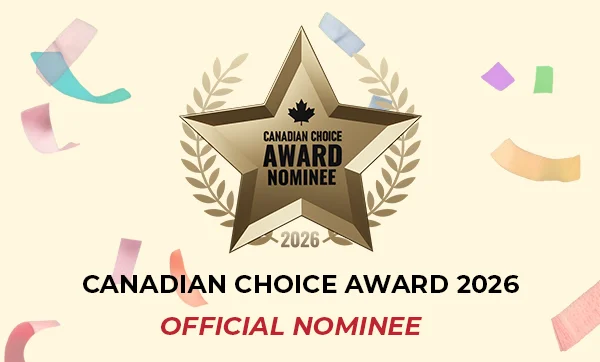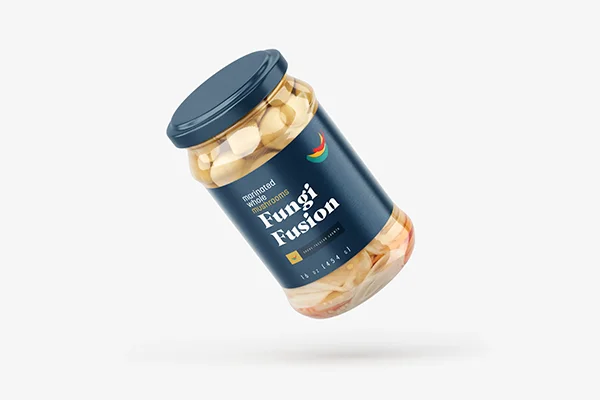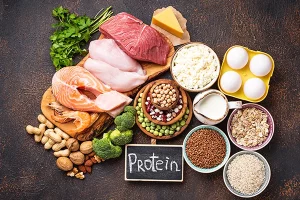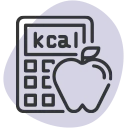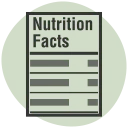In the US, net weight labelling is a critical component of packaging compliance, governed by regulations established by the Food and Drug Administration (FDA) and enforced through federal law. Whether you’re packaging food, cosmetics, or other consumer goods, understanding how to accurately display net wt. on packaging is not optional; it’s a legal requirement.
This in-depth guide covers everything manufacturers, packagers, and retailers need to know about net weight, net wt. meaning, how it’s displayed, and how to remain compliant with U.S. weights and measures law.
Key Takeaways
- Net weight refers only to the weight of the product, excluding packaging.
- FDA regulations (21 CFR 101.105) require net weight to appear on the principal display panel in the bottom 30%, parallel to the base.
- Both U.S. customary and metric units must be shown for compliance.
- The font size for net weight depends on the principal display panel size. It must be bold, legible, and in contrast to the background.
- Net Contents is used for liquids, while net weight is for solids, semi-solids, and viscous products.
- Accurate net weight labelling builds consumer trust and helps avoid FDA enforcement actions.
What Is Net Weight?
Net weight (often abbreviated as net wt..) refers to the actual weight of the product alone, excluding the weight of any packaging materials such as boxes, wrappers, or containers.
For example, if a jar of peanut butter weighs 18 ounces in total, but the jar itself weighs 2 ounces, the net weight is 16 ounces.
This measurement is critical because it informs consumers exactly how much product they are buying, not the weight of the packaging.
Does Net Weight Include Packaging?
No, net weight does not include the weight of the packaging. That would be considered the gross weight, which includes the total of the product plus its container and packaging materials.
Regulatory agencies like the FDA and Federal Trade Commission (FTC) require net weight to represent only the consumable portion of the product.
What Does “Net Wt.” Mean?
The abbreviation “Net Wt.” stands for Net Weight and is the standard term used in the US on food packaging, cosmetics, and other consumer goods.
You may also see alternate shorthands like:
- Net Wt 100g
- Nt Wt
- Weight Netto (rarely used in the U.S.)
But the FDA-approved format for labelling should follow the proper structure, such as:
- Net Wt. 16 oz (1 lb) or Net Wt. 12 oz (340 g)
Both U.S. customary units and metric equivalents are required for FDA compliance.
Why Net Weight Labelling Matters
1. Regulatory Compliance
FDA regulations (21 CFR 101.105) mandate that all packaged food products display the net quantity of contents on the principal display panel (PDP) of the label.
Failure to comply can lead to enforcement actions such as product recalls, fines, seizures, and import refusals.
2. Consumer Transparency
Accurate net wt. on packaging allows customers to compare products and pricing fairly. It builds trust in your brand and helps avoid claims of deceptive practices.
3. Market Access
Retailers and distributors often conduct audits to ensure product labelling meets U.S. Weights and Measures laws. Non-compliant products can be rejected from store shelves or distribution centers.
FDA Regulations on Net Weight Labelling
Accurate net weight labelling isn’t just a regulatory requirement; it’s fundamental to building consumer confidence and ensuring your products meet FDA compliance standards. Here’s everything food and beverage manufacturers need to know about current FDA net weight labelling regulations.
1. Font Size Requirements
The minimum font size for the net quantity statement is based on the area of the PDP:
| PDP Area (sq. in.) | Minimum Height of Letters |
| ≤ 5 | 1/16 inch |
| > 5 – ≤ 25 | 1/8 inch |
| > 25 – ≤ 100 | 3/16 inch |
| > 100 – ≤ 400 | 1/4 inch |
| > 400 | 1/2 inch |
The lettering must be:
- Bold
- Legible
- In a contrasting colour
- Unobstructed by graphics or folds
Read more: Ultimate Guide to FDA Nutrition Label Fonts and Sizes
2. Principal Display Panel (PDP) Requirements
The FDA mandates that net weight information appear on your product’s principal display panel (PDP), the packaging section most visible to consumers during purchase. Key placement requirements include:
- Location: Net weight must be positioned within the lower 30% of the PDP
- Visibility: Font size must be proportional to the PDP area and clearly legible
- Prominence: The declaration should be conspicuous and easy for consumers to locate
The specific font size requirements scale with your PDP dimensions, ensuring readability across different package sizes.
3. Small Package Considerations and Exemptions
The FDA recognizes that extremely small packages face unique labelling challenges. Here’s what applies:
Packages under 5 square inches on the principal display panel receive some flexibility in font size requirements, though net weight information must still be clearly visible and conspicuous.
Bulk and wholesale containers for further processing don’t require net weight statements. However, if manufacturers choose to include this information, it must be accurately positioned on the principal display panel and reflect the true net quantity.
4. Variable Weight Product Requirements
Products sold without predetermined weights, commonly found in deli counters, butcher shops, and fresh food sections, must still meet FDA standards:
- Net weight determination occurs at the point of sale
- Weight information must be clearly displayed on packaging
- All labelling must remain legible and prominent despite the variable nature of these products
5. Dual Unit Declaration Standards
The FDA requires comprehensive weight declarations to serve all consumers effectively:
- U.S. Customary Units: Pounds and ounces for familiar domestic measurements
- Metric Units: Grams or kilograms for international clarity
Correct Example:
Net Wt. 16 oz (454 g)
This dual approach ensures your products are accessible to consumers regardless of their measurement system preference, supporting both domestic sales and potential export opportunities.
USDA Net Weight Requirements for Meat, Poultry & Eggs

The USDA enforces specific net weight labelling standards for meat, poultry, and egg products with some unique provisions:
Standard Requirements:
- Accurate net weight prominently displayed (excluding packaging weight)
- Principal display panel placement required
- Specific font sizing for optimal readability
- Dual declaration in both U.S. customary and metric units
Special Provisions:
- Bulk containers for further processing don’t require net weight statements (but if included, must be accurate and properly placed)
- Random weight items are exempt individually, but shipping containers must display net weight
- Catch weight products follow similar exemption rules for individual items
These USDA-specific provisions reflect the unique distribution and processing patterns in the meat and poultry industry, offering more flexibility for wholesale operations while maintaining consumer protection standards.
Read more: Top 10 Labelling Mistakes That Can Delay FSIS Approval
Examples of Net Weight Statements
Here are compliant net weight statements that follow FDA guidelines:
- Net Wt. 12 oz (340 g)
- Net Wt. 3.5 oz (99 g)
- Net Contents: 1 qt (946 mL) for liquids
- Net Wt. 5 lb (2.27 kg) for bulk items
Net Weight vs. Net Contents: Know the Difference
While often used interchangeably, the FDA distinguishes between “Net Weight” and “Net Contents”:
- Net Weight: Used for solids, semi-solids, and viscous products measured by weight.
- Net Contents: Used for liquids, measured by volume.
Examples:
- Peanut butter: Net Wt. 16 oz (454 g)
- Juice: Net Contents: 64 fl oz (1.89 L)
Net Weight Formatting Rules Under 21 CFR 101.105
- Placement: Bottom 30% of the PDP.
- Parallel: Statement must be parallel to the base.
- Font: Proportionate to PDP area and at least 1/16” high for small packages.
- Language: Must include both U.S. customary and metric units.
- Accuracy: Must represent the actual contents, excluding packaging.
- No Exaggeration: Overstated weights are a violation of the law.
Common Mistakes in U.S. Net Weight Labelling
Avoid these pitfalls to remain FDA compliant:
- Not including metric units.
- Incorrect placement, top or side panels are not compliant.
- Using informal abbreviations like “Net W.” instead of “Net Wt.”
- Omitting the net weight altogether.
- Illegible fonts or poor contrast make the label hard to read.
- Including the packaging weight in net weight calculations.
Best Practices for FDA-Compliant Net Weight Labelling
- Weigh each product batch using calibrated scales.
- Deduct the tare weight (weight of packaging).
- Format labels according to 21 CFR 101.105 requirements.
- Print the net weight in a clear, bold font on the front of the packaging.
- Run internal compliance audits periodically.
- Consult a regulatory expert when updating packaging designs.
Read more: Health Claims, Nutrient Content Claims & Structure Function Claims Explained
Stay Compliant, Stay Competitive
Correctly labelling the net weight of your product is not just a technicality; it’s a legal necessity that directly impacts your credibility, compliance status, and commercial viability.
Follow FDA guidelines to ensure your product packaging displays the net wt., uses the correct font size and units, and appears in the required location. Doing so avoids regulatory penalties and fosters trust with customers and retailers alike.
